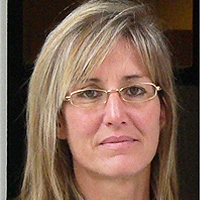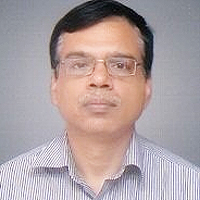Age-related changes in cell yield and viability of feline Adipose Tissue-Derived Mesenchymal Stem (fAD-MSCs)
Published on: 1st April, 2022
In the present study, omental adipose tissue was collected from, the animals that underwent ovariectomy and ovariohysterectomy, surgical procedures, at the age of seven months to 11/2 years of age groups. The sample was digested with 0.1% (W/V) collagenase type I and transferred to a beaker with a magnetic stirrer and kept in a stirrer with 600 rpm at 37 °C for 30 minutes. The viability of the cell was evaluated by the trypan blue exclusion method using a hemocytometer. Trypan blue had a high affinity to nuclear DNA, which traverse the member in a dead cell and dye it blue. In the present study, the cell yield of fAD-MSCs was 8.15 ± 0.68, 6.55 ± 0.26, 4.85 ± 0.42, 3.90 ± 0.34, and 3.51 ± 0.43 in different age groups viz., 7,8,9 month 1 and 1½ year respectively. In younger age groups, cell yield and viability percentage were more than in animals of higher age groups. In the younger age group, stem cells proliferation status is considered potent for therapeutic application.
Use of collagenase to isolate adipose tissue-derived stem cells – substantial manipulation or not?
Published on: 30th August, 2022
Background: Collagenase is commonly used to isolate the stromal vascular fraction (SVF) or adipose tissue-derived stem cells (ADSCs) from human adipose tissue. Enzymatic breakdowns may be a substantial manipulation according to the classifications of medical regulatory authorities. This study investigates the possible effects of human adipose tissue dissociation with collagenase on in vitro function and behavior of ADSCs.Methods and results: Adipose tissue from nine donors was divided into two equal fractions. SVF was then isolated either mechanically or with collagenase, respectively. The resulting cells were analyzed for their surface markers directly after isolation and at passage five. Proliferation, tri-lineage differentiation, and secretome markers were measured after passage four.Using collagenase compared to mechanical isolation did not alter the expression of typical surface markers of ADSCs. ADSCs isolated with collagenase showed a significantly shorter population doubling time (p < 0.001), a significantly higher mean specific GPDH-activity, a stronger intensity in perilipin staining (p = 0.005), and a significantly higher extracellular calcium deposition (p = 0.006) than mechanically isolated ADSCs. The expression of adipogenic and osteogenic marker genes was not different in mechanically versus enzymatically isolated ADSCs. There were no significant differences in proteoglcyan production (p > 0.05) and the concentration of type 2 collagen. Except for an increased CCL2 concentration in mechanically isolated ASDCs (p = 0.01), there were no significant differences in the concentration of secreted proteins between both isolation methods. Conclusions: The use of collagenase does not substantially impair central in vitro characteristics and functions of human adipose tissue-derived stem cells.
Expression of Collagen VI, Anticollagenase, Laminin, MM9, Claudins 1 and 5, N and E Cadherins in Choroid Plexus Tumors
Published on: 25th November, 2023
Background: CPTs are rare intraventricular papillary neoplasms derived from the choroid plexus epithelium. Anti-collagenase and extracellular matrix which have not been expressed in brain tumors. Objective: The purpose of this study was to investigate the expression levels of collagen type VI, anti-collagenase, laminin, MM9, claudins 1 and 5, N and E cadherins, and collagen VII, tejido, and collagen degradation enzyme complexes in choroid plexus tumors.Materials and methods: We studied the expression of adhesion molecules, extracellular matrix, and anticollagenase with an immunohistochemistry approach and electron microscopy analysis in 42 choroid plexus tumors. Results: 28(67%) were choroid plexus papillomas, 8 (19%) were atypical choroid plexus papillomas and 6 (14%) were choroid plexus carcinomas. The Ki67-li and MVD increased from CPC to ACPP, being the highest in malignant tumors as well as a strong immunoexpression of anti-collagenase and were inverse correlation with claudin 5, E, and N cadherin and collagen IV immunoexpressions which added further significant information to the prognosis and varied according to the histologic classification. By ultrastructure, the loss of basal membrane and cilia, disorganization, and proliferation of ECM were observed in CPC. Cerebral homeostasis largely results from the ability of both the Blood–Brain Barrier (BBB) at the brain microvascular endothelium and the Blood–Cerebrospinal Fluid Barrier (BCSFB) at the epithelium of the Choroid Plexuses (CPs), to control the composition of the CSF and cerebral extracellular fluid. Under expression of the tight junction proteins occludin, claudin-1 and claudin-5 are key molecular abnormalities responsible for the increased permeability of tumor endothelial tight junctions. Conclusion: The loss of basement membrane and ECM overexpression could be considered as a poor prognosis predictor in CPT. Anti-collagenase and MMP9 overexpression could be related to basal membrane and BBB plasticity in CPTs.
















